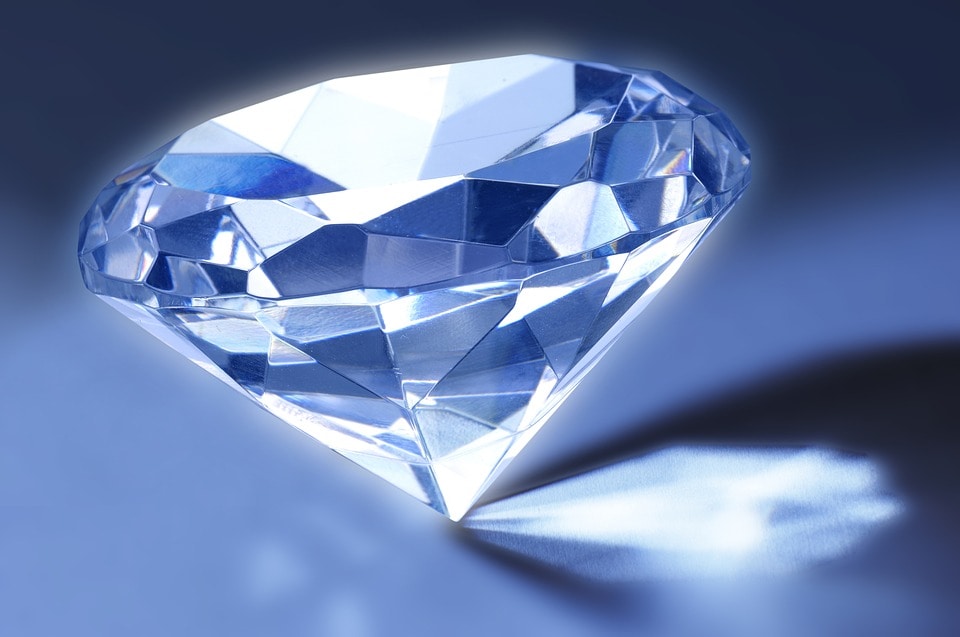
Table of Contents
If you’ve been searching for a diamond, you’ll have heard by now that of the 4Cs of diamonds, cut is king. Cut is divided into factors that determine the overall sparkle, clarity, and beauty of the diamond. Of these, two vital factors that are part of the cut of every diamond but also contribute to its overall quality are the diamond table and diamond depth.
The table and depth of a diamond are displayed on its diamond certificate. All else being equal, these two specifications can impact how a diamond looks. While they might sound complicated, these are actually simple characteristics that we’ll explain here in full detail.
What is Diamond Depth?
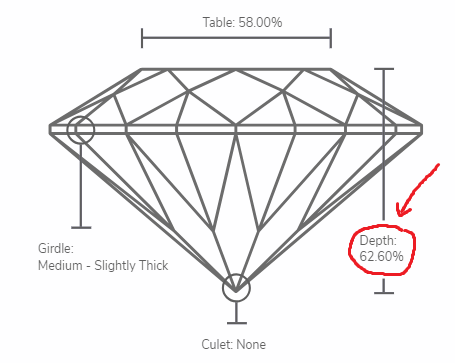
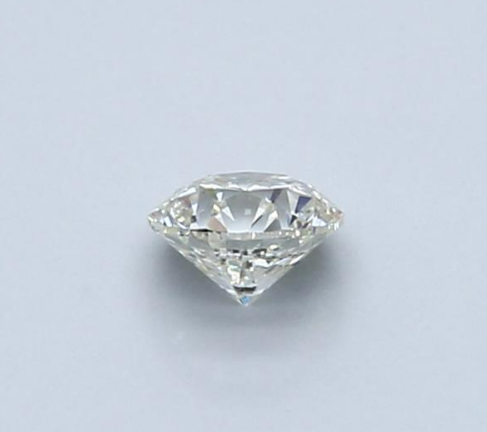
Simply put, diamond depth is the height of a diamond from its table to its culet. This is why it’s also sometimes called diamond height.
Diamond depth is often listed with both its numerical value in millimeters and its percentage value. The percentage is derived by dividing the millimeter value of the stone’s depth by its width.
The millimeter value informs us about the sheer depth of the stone, while the percentage value tells is more about its overall proportions, making both these numbers important.
What is Diamond Table?
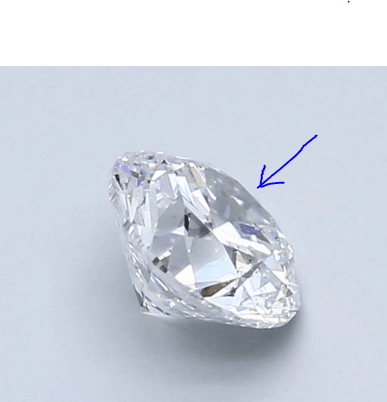
Diamond table refers to the large flat facet on the top of the stone. It’s the most visible and noticeable part of the diamond once it’s placed in its setting.
The diamond table is also the main part of the stone when it comes to refracting and directing the light rays that fall onto it. As such, it’s essential for the overall appearance, outlook, sparkle and quality of the stone.
The way diamond tables are measured is in percentages, by dividing them by the overall width of the stone – just as the diamond depth is measured. For example, if a round diamond is 5 millimeters wide and has a table that’s 3 millimeters wide, then that diamond’s table is 60%.
What’s the Best Diamond Table and Depth Measurements?
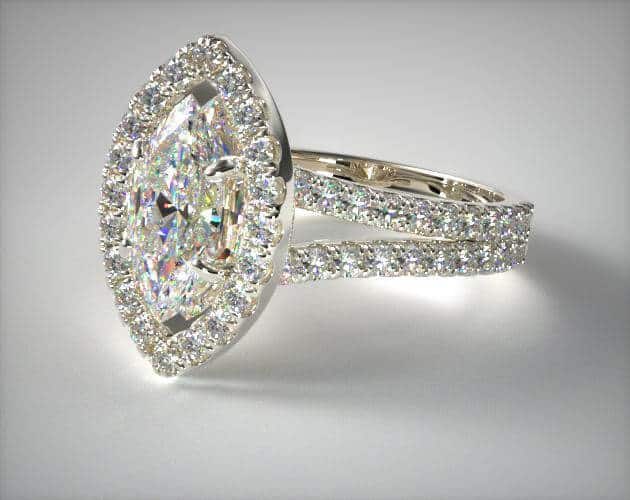
Depending on the shape of the diamond its ideal table and depth dimensions will differ. A princess cut diamond has different ideal depth and table proportions to a round cut diamond. So, when considering the depth of your stone, you also need to take into account its shape.
Here’s an image that lists the perfect table and depth dimensions of most of the popular diamond shapes:
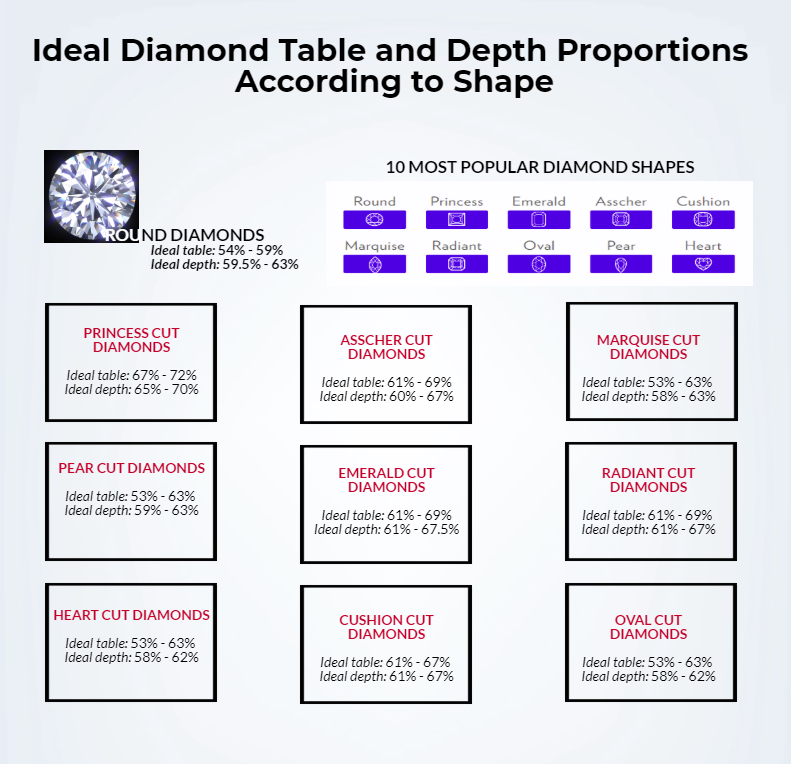
Of course, these are just the ideal proportions but even a high-quality diamond can sometimes stray from these percentages a little bit. What matters is how the diamond looks and for this, you need to carefully examine the stone and see how it interacts with light.
How Do Diamond Depth and Table Affect Cut Quality?
Diamond cut is commonly graded using the GIA cut scale:

When the stone has ideal cut (which includes percentages of depth and table), the stone’s value is higher and it’s visually more stunning. As the proportions vary and the quality diminishes, the stone falls into a lower cut grade.
When comparing two diamonds, the depth and table of the two stones can make a decisive difference in their appearance, quality and value, all else being equal.
How Do Diamond Depth and Table Affect Sparkle?
As the sparkle and dispersion properties of every stone are determined largely by its cut, it’s clear that depth and table are a big part of this equation.
The diamond table is what governs how much light is going to be taken in and refracted by the stone, and so how wide it is affects the stone’s sparkle.
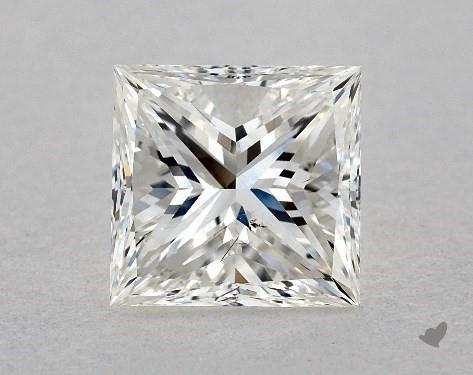
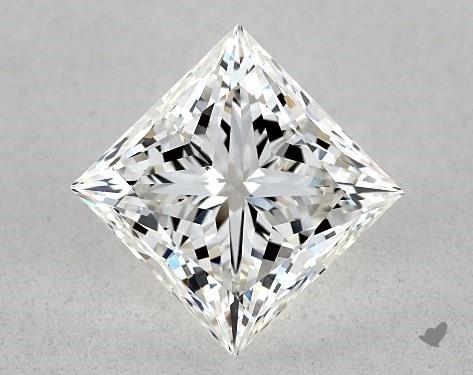
See more Princess cut diamond on James Allen.
Take a look at the first princess cut diamond featured above. It has an extremely wide table of 83% which severely affects the light dispersion and sparkle of the stone. The diamond looks flat, like a Scrabble tile, and showcases less movement. The second princess cut has ideal table proportions. Notice how it has much better faceting, light performance and overall aesthetics.
What about with round diamonds?
Compare this diamond with a 53% table and this one with a 69% table Notice the difference in their aesthetics. The diamond with the larger table looks flatter and its dispersion properties are not as impressive as that of the other diamond.
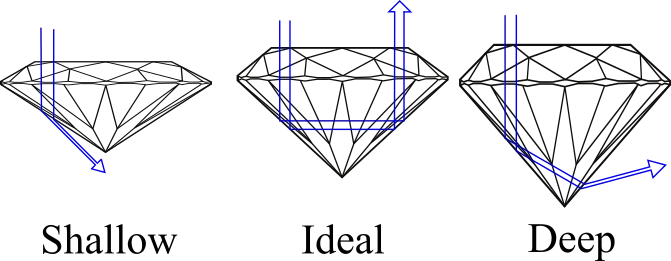
Similar to the table, the diamond depth also governs how it will reflect incoming light. If a diamond is cut too deep, it will have lower brightness and a duller look. This is because much of the light travels through the diamond with little reflecting back up.
Likewise, if a diamond is too shallow, light tends to go right through the diamond, and the sparkle and brilliance of the stone will be affected. Such shallow-cut diamonds are known as spread diamonds.
In the ideal situation, the light that goes through the diamond’s table will hit the pavilion of the diamond (its lower side) at such an exact angle that it will “slide” on it, turn on a 180 degree angle, and reflect back up the table. This simple image clearly shows this effect.
Diamonds with a depth that’s either above or below the ideal average will not reflect light in a proper way and will have significantly less sparkle to dazzle you with. That’s why diamond depth is very often kept in its desirable range, especially when it comes to diamonds from reputable vendors.
How to Check for Diamond Table and Depth When Purchasing Online?
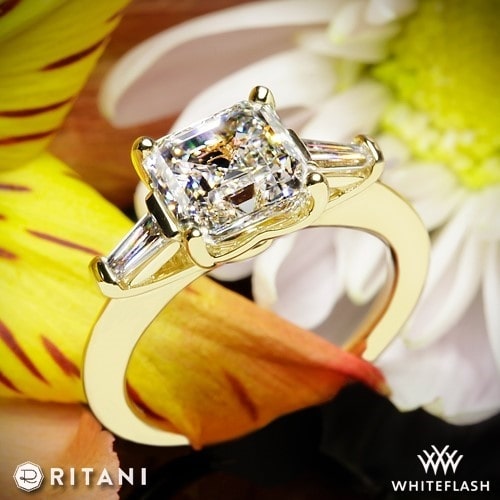
One of the main concerns people have when shopping online is whether they’ll get the value that has been promised to them by the description and the photos of the diamonds.
That’s why we always recommend that you work only with reputable and trustworthy vendors. Whichever vendor you choose, however, photos shouldn’t be the only thing to base your decision on. An online diamond vendor should always provide a detailed description and diagrams describing the stone’s cut proportions, including table and depth. There should also be a lab report from a reputable lab like GIA or AGS detailing the specifications of the stone.
We recommend the following retailers:
Why: Superior diamond imaging, competitive prices, high quality, wide range
An online giant in the diamond space, James Allen a stunning collection of high-quality diamonds. The images and videos are unparalleled in quality and is the same as viewing the diamond through a jeweler’s loupe.
Why: Competitive prices, wide range, great quality
One of the most well-known online diamond retailers, Blue Nile offers a massive exclusive online diamond inventory. Search diamonds and gemstones here at competitive prices, solid after-sales policies, and good customer service.
Why: Superior cut quality, exclusive range, stunning designs
Whiteflash has earned an international reputation for the elite quality of their precision cut diamonds, and for their impeccable collection of designer engagement rings. Check their stunning range of diamond jewelry and loose diamonds.
Why: Impeccable quality, superior cut, small but exclusive inventory
Brian Gavin is a renowned expert in diamond cut – and it shows in their superior diamond quality. For the very best in diamonds, search their inventory of designer diamond jewelry and loose diamonds.
Why: Lab created and mined yellow diamonds and sapphires
If you want to try out how a round diamond ring looks on your finger before you commit to buying one, check out With Clarity’s Home Preview Service which is completely free. Find out more here.
In Brief
There are lots of factors that go into deciding on the right diamond, with the 4Cs being the most well-known. Diamond table and diamond depth are also two vital factors, as they are crucial components of a diamond’s cut and play a huge role in its sparkle, light dispersal and brilliance.
Sorting diamonds based on their table and depth measurements is an easy way to weed out desirable stones from less desirable ones and it can make your decision much easier. However, this doesn’t mean that you should take the table and the depth of a stone as sole governing factors, of course, as there are many factors that ultimately affect the overall quality of a stone.
At the end of the day, you’ll also be taking into account what you personally think is a beautiful stone. And this can vary from person to person.









